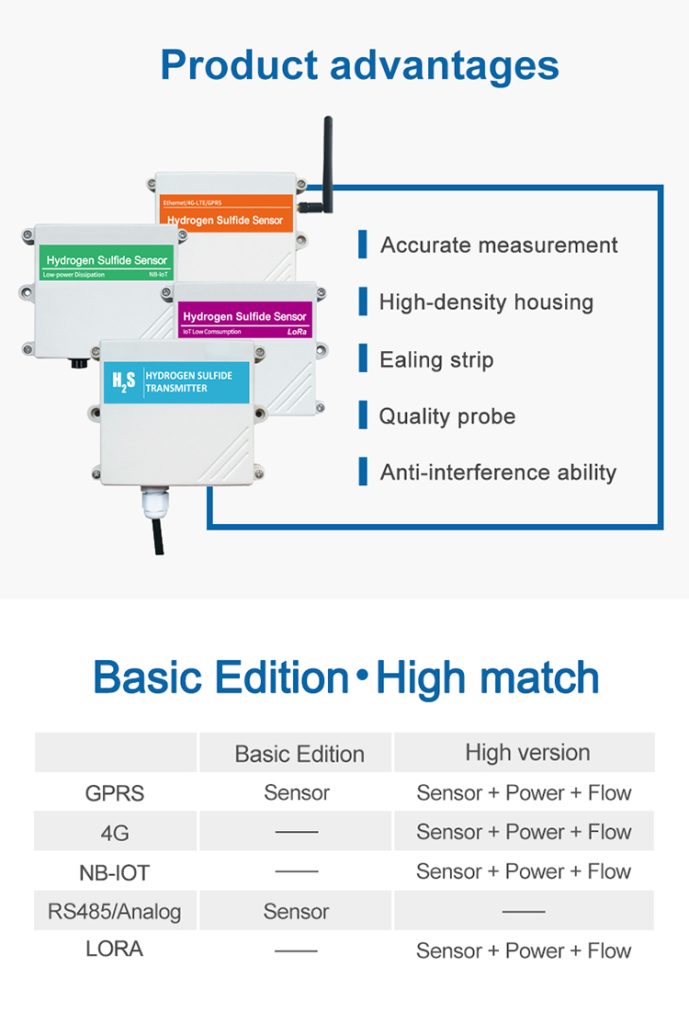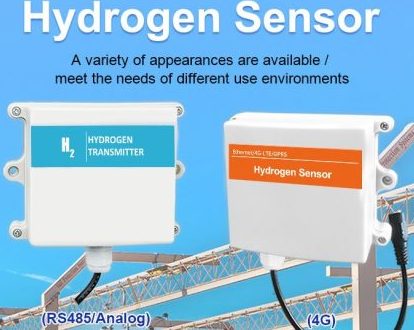Monitoring hydrogen levels is crucial in various industrial, laboratory, and environmental settings. Hydrogen is a highly flammable and explosive gas, and its presence must be closely monitored to ensure safety and prevent potential hazards. In recent years, high-sensitivity hydrogen sensor have change the way of hydrogen monitoring. These sensors play a critical role in ensuring workplace safety, environmental protection, and the efficient operation of hydrogen-related processes. This essay will explore the significance of highly sensitive hydrogen sensors, their applications, the underlying technology, and their impact on safety and environmental protection.
Importance of Highly Sensitive Hydrogen Sensors
Highly sensitive hydrogen sensor are essential for detecting and monitoring the presence of hydrogen gas in various environments. Hydrogen is widely used in industrial processes, fuel cells, laboratories, and as a potential alternative energy source. However, its flammability and explosiveness make it imperative to have reliable and sensitive sensors to detect even trace amounts of hydrogen. Highly sensitive hydrogen sensors are designed to provide real-time monitoring of hydrogen levels, allowing for immediate response in the event of leaks, spills, or other potential safety hazards.
Applications of Highly Sensitive Hydrogen Sensors
Highly sensitive hydrogen sensor find applications across a wide range of industries and settings. Some of the key applications include:

Industrial Safety: In industrial settings, highly sensitive hydrogen sensor are monitor the presence of hydrogen in manufacturing facilities, refineries, chemical plants, and other environments where hydrogen is used or produced. These sensors play a crucial role in ensuring the safety of workers and preventing potential fire or explosion hazards.
Hydrogen Fuel Cells: Highly sensitive hydrogen sensors are integral to the efficient operation of hydrogen fuel cells, which are used to power vehicles, forklifts, and stationary power systems. These sensors help monitor hydrogen levels to ensure the safe and reliable performance of fuel cell systems.
Laboratory Environments: Research laboratories and facilities that handle hydrogen gas rely on highly sensitive sensors to monitor and control the levels of hydrogen during experiments and other processes. These sensors contribute to the safety of laboratory personnel and the protection of valuable research equipment.
Environmental Monitoring: Highly sensitive hydrogen sensors are used in environmental monitoring programs to assess the presence of hydrogen in ambient air, particularly in areas where hydrogen-related activities or industrial processes are conducted. These sensors help identify potential sources of hydrogen emissions and ensure compliance with air quality regulations.
Underlying Technology of Hydrogen Sensors

Hydrogen sensors utilize various technologies to detect and measure the presence of hydrogen gas. Some of the common technologies employed in these sensors include:
Palladium-Based Sensors: Palladium is known for its ability to absorb hydrogen, leading to changes in its electrical and physical properties. Highly sensitive hydrogen sensors often utilize palladium-based materials to detect the presence of hydrogen through the measurement of these changes.
Metal-Oxide Semiconductor (MOS) Sensors: MOS sensors are widely used for gas detection, including hydrogen. These sensors rely on the interaction between hydrogen and metal-oxide materials to produce measurable changes in electrical conductivity, which are then used to determine hydrogen concentration.
Solid-State Electrochemical Sensors: Solid-state electrochemical sensors are designed to detect hydrogen through the use of specific electrolyte materials and electrodes. When hydrogen interacts with the sensor’s components, it generates an electrical signal that can be measured and used to determine hydrogen levels.
Nanomaterial-Based Sensors: Nanomaterials, such as carbon nanotubes and nanowires, have shown promise in the development of highly sensitive hydrogen sensors. These sensors leverage the unique properties of nanomaterials to detect and measure hydrogen gas with exceptional sensitivity.
Impact on Safety and Environmental Protection
The development and widespread use of highly sensitive hydrogen sensors have had a significant impact on safety and environmental protection. These sensors play a crucial role in mitigating potential hazards associated with hydrogen gas and contribute to the following:
Early Detection of Leaks: Highly sensitive hydrogen sensors enable the early detection of hydrogen leaks in industrial facilities, laboratories, and other settings. This early detection allows for prompt intervention and the implementation of safety measures to prevent accidents and protect personnel and assets.
Enhanced Workplace Safety: By providing real-time monitoring of hydrogen levels, highly sensitive sensors contribute to enhanced workplace safety in environments where hydrogen is used, handled, or produced. They help minimize the risk of fire, explosions, and other hydrogen-related incidents.
Compliance with Regulations: In industries where hydrogen is utilized, highly sensitive sensors aid in ensuring compliance with safety and environmental regulations. By continuously monitoring hydrogen levels, these sensors help facilities maintain safe operating conditions and adhere to regulatory requirements.
Environmental Monitoring and Protection: Highly sensitive hydrogen sensors support environmental monitoring efforts by detecting hydrogen emissions and assessing their impact on air quality. This capability is essential for protecting the environment.
Conclusion
Highly sensitive hydrogen sensors are indispensable tools for detecting and monitoring the presence of hydrogen gas in diverse applications. These sensors play a critical role in ensuring workplace safety, environmental protection, and the efficient operation of hydrogen-related processes. By leveraging advanced sensing technologies, highly sensitive hydrogen sensors provide real-time monitoring, early detection of leaks, and compliance with safety regulations.
